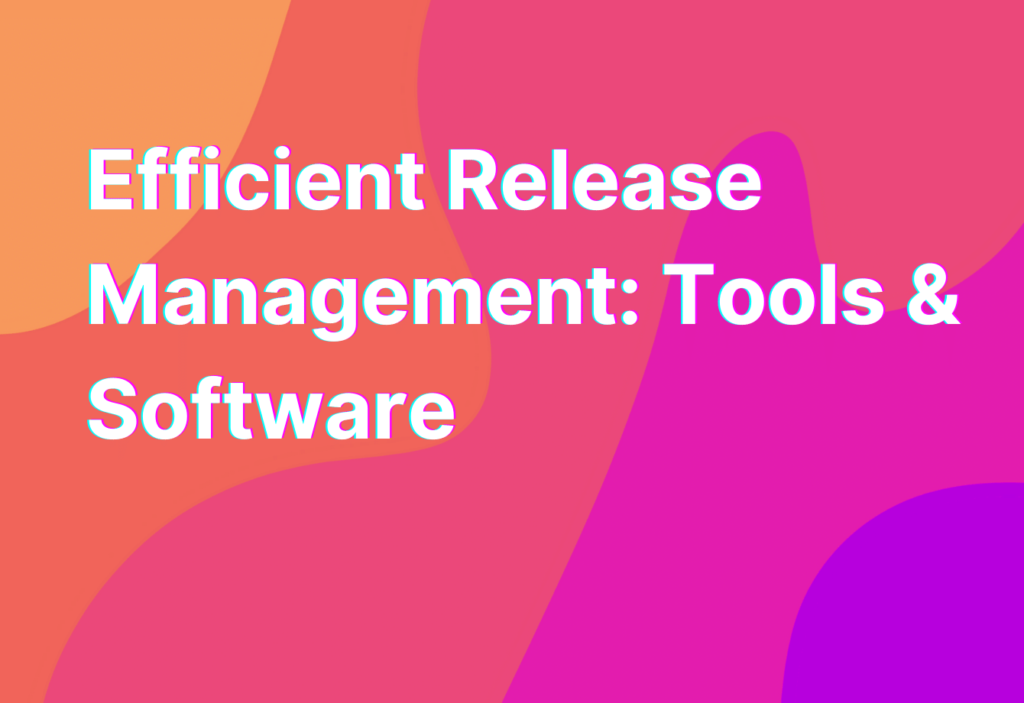Efficient Release Management: Tools & Software
Release management is a crucial aspect of any software development process. It involves planning, scheduling, and controlling the movement of software releases from development to testing to deployment. Without proper release management, chaos can ensue, leading to missed deadlines, poor quality software, and frustrated team members. In this article, we will explore some of the best tools and software available to streamline the release management process.
1. Jira Software
Jira Software is a popular project management tool that offers robust release management capabilities. With Jira, you can create and manage release plans, track the progress of releases, and collaborate with your team members effectively. It allows you to define release goals, set deadlines, and assign tasks to team members. Jira also provides real-time visibility into the status of releases, making it easier to identify and resolve any issues that may arise.
One of the key features of Jira Software is its integration with other development tools such as Bitbucket and Jenkins. This integration allows for seamless automation of the release process, reducing the risk of human error and speeding up the time to market. With Jira, you can also generate detailed reports and metrics to analyze the performance of your release management process.
Jira Software is a powerful tool that can greatly enhance your release management efforts. Its user-friendly interface and extensive features make it a top choice for many development teams.
2. Trello
Trello is a popular project management tool known for its simplicity and flexibility. While it may not have all the advanced features of Jira, it is still a great option for small to medium-sized teams looking for a lightweight release management solution.
With Trello, you can create boards, lists, and cards to organize your release tasks. Each card represents a specific task or feature, and you can easily move them across lists to track their progress. Trello also allows you to assign team members to cards, set due dates, and add comments or attachments.
One of the advantages of Trello is its integration with other tools such as Slack and Google Drive. This integration enables seamless collaboration and communication among team members, making it easier to coordinate release activities.
Trello is a simple yet effective tool for managing your release process. Its intuitive interface and customizable features make it a popular choice among remote teams.
3. GitLab
GitLab is a complete DevOps platform that offers a wide range of features, including release management. With GitLab, you can create and manage releases, track their progress, and automate the deployment process.
One of the key features of GitLab is its built-in continuous integration and continuous deployment (CI/CD) capabilities. This allows you to automate the entire release process, from code changes to testing to deployment. GitLab also provides a comprehensive set of tools for version control, code review, and collaboration.
Another advantage of GitLab is its integration with Kubernetes, a popular container orchestration platform. This integration allows for seamless deployment of applications to Kubernetes clusters, making it easier to scale and manage your releases.
GitLab is a powerful platform that combines release management with other DevOps capabilities. Its extensive feature set and integration options make it a great choice for teams looking for an all-in-one solution.
4. CircleCI
CircleCI is a continuous integration and delivery (CI/CD) platform that offers robust release management capabilities. With CircleCI, you can automate the entire release process, from building and testing to deploying and monitoring.
One of the key features of CircleCI is its support for multiple programming languages and frameworks. Whether you’re working with Python, Ruby, Java, or any other language, CircleCI has you covered. It also integrates seamlessly with popular version control systems such as GitHub and Bitbucket.
CircleCI provides a user-friendly interface for configuring and managing your release pipelines. You can define custom workflows, set up automated tests, and deploy your applications to various environments. CircleCI also offers extensive logging and monitoring capabilities, allowing you to track the performance of your releases in real-time.
CircleCI is a powerful CI/CD platform that can greatly simplify your release management process. Its flexibility and scalability make it a top choice for teams of all sizes.
5. Azure DevOps
Azure DevOps is a comprehensive set of development tools offered by Microsoft. It includes a wide range of features, including release management, project management, version control, and more.
With Azure DevOps, you can create and manage releases, track their progress, and automate the deployment process. It provides a user-friendly interface for defining release pipelines, configuring environments, and setting up automated tests. Azure DevOps also offers integration with popular development tools such as Visual Studio and GitHub.
One of the advantages of Azure DevOps is its integration with Azure, Microsoft’s cloud computing platform. This integration allows for seamless deployment of applications to Azure services, making it easier to scale and manage your releases.
Azure DevOps is a powerful set of tools that can greatly enhance your release management efforts. Its integration with Azure and other Microsoft services makes it a top choice for teams working in the Microsoft ecosystem.
Wrapping Up
Efficient release management is essential for successful software development. By using the right tools and software, you can streamline the release process, improve collaboration, and deliver high-quality software on time. Whether you choose Jira Software, Trello, GitLab, CircleCI, or Azure DevOps, each of these tools offers unique features and benefits to suit your team’s needs.
Remember, release management is just one piece of the puzzle when it comes to remote team collaboration. To learn more about effective remote team communication and collaboration, check out our article on Agile methodology.


